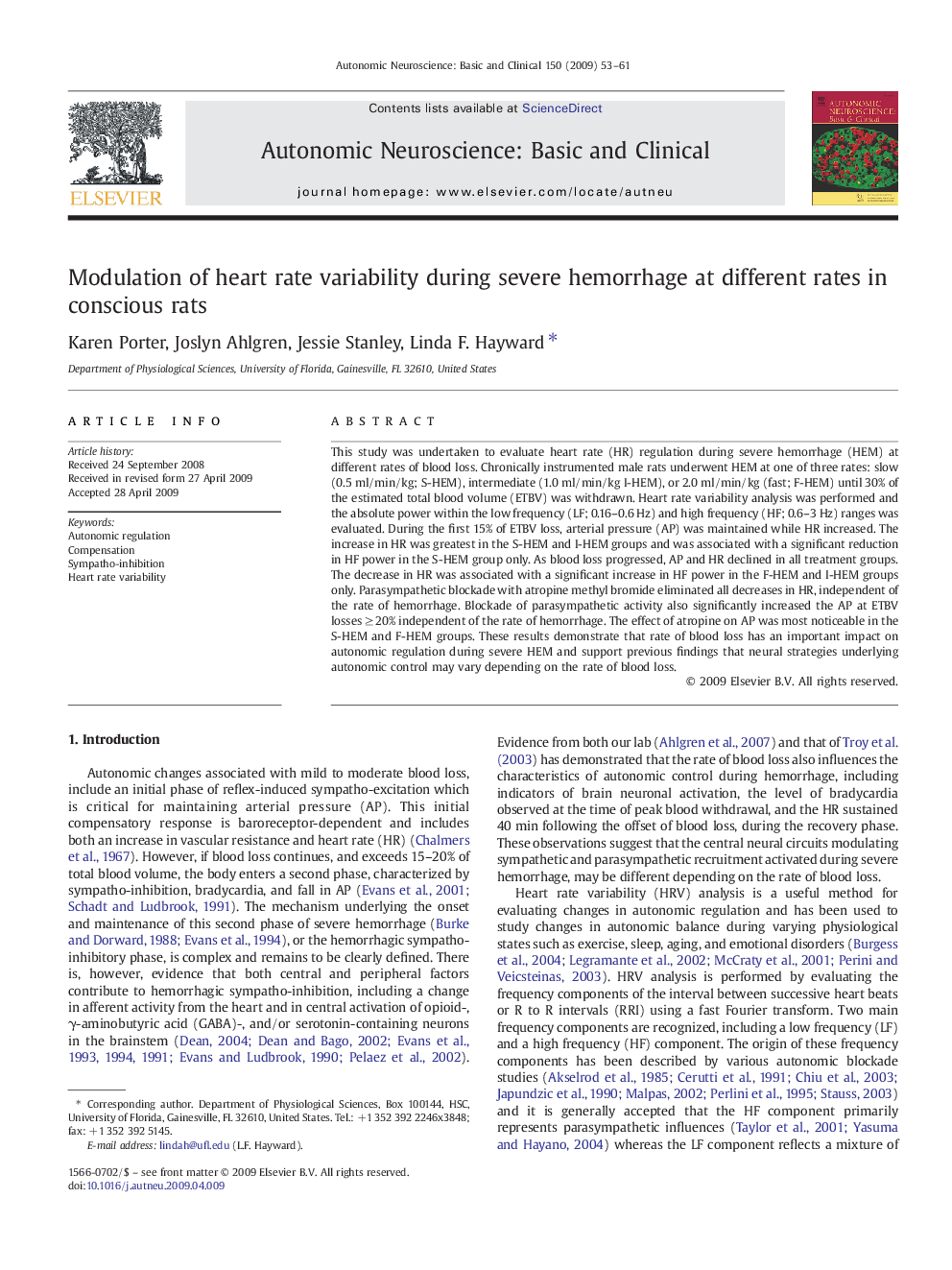| Article ID | Journal | Published Year | Pages | File Type |
|---|---|---|---|---|
| 6004757 | Autonomic Neuroscience | 2009 | 9 Pages |
This study was undertaken to evaluate heart rate (HR) regulation during severe hemorrhage (HEM) at different rates of blood loss. Chronically instrumented male rats underwent HEM at one of three rates: slow (0.5 ml/min/kg; S-HEM), intermediate (1.0 ml/min/kg I-HEM), or 2.0 ml/min/kg (fast; F-HEM) until 30% of the estimated total blood volume (ETBV) was withdrawn. Heart rate variability analysis was performed and the absolute power within the low frequency (LF; 0.16-0.6 Hz) and high frequency (HF; 0.6-3 Hz) ranges was evaluated. During the first 15% of ETBV loss, arterial pressure (AP) was maintained while HR increased. The increase in HR was greatest in the S-HEM and I-HEM groups and was associated with a significant reduction in HF power in the S-HEM group only. As blood loss progressed, AP and HR declined in all treatment groups. The decrease in HR was associated with a significant increase in HF power in the F-HEM and I-HEM groups only. Parasympathetic blockade with atropine methyl bromide eliminated all decreases in HR, independent of the rate of hemorrhage. Blockade of parasympathetic activity also significantly increased the AP at ETBV losses â¥Â 20% independent of the rate of hemorrhage. The effect of atropine on AP was most noticeable in the S-HEM and F-HEM groups. These results demonstrate that rate of blood loss has an important impact on autonomic regulation during severe HEM and support previous findings that neural strategies underlying autonomic control may vary depending on the rate of blood loss.
